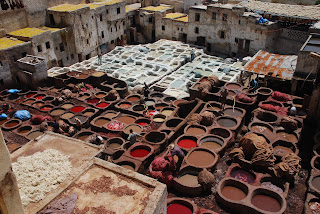Valencia: Paella & Horchata
I’ve been trying to recall why I chose to visit Valencia, the next stop on the Spanish leg of the Great Odyssey. It’s quite a lovely city with its 13th century gothic-style cathedral, the ancient winding streets of Barrio del Carmen populated with open air cafés and restaurants, and the Parisian-style buildings that surround city hall. Apart from the miles and miles of sandy Mediterranean beaches though, it’s not really what I’d describe as a touristy place.
Perhaps I’d just enjoyed a Valencian orange, possibly the most perfect agricultural product on the planet, so sweet, juicy and brightly coloured. That’s probably what you think of too when I mention Valencia. More likely though, I was thinking about where I should go to learn to prepare Spain’s most famous type of cuisine, the rice-based Paella. It was invented here, and during my 5 nights in Spain’s 3rd largest city, I attempted to do a comprehensive review of the local offerings. I discovered that every restaurant makes it, but few have the patience or the skill to do so well. You could name as many different rice and Paella variations as Bubba (from Forrest Gump) could name shrimp dishes. The most ubiquitous, Paella Valenciana, features rabbit, chicken and shellfish as its primary proteins.
Seafood Paella (image (c) Manuel M. Vicente)
After a devastating flood in the late 1950’s, Valencia completely drained and re-routed the river that flowed along the edge of the old city. With an empty riverbed bisecting old and new parts of Valencia, they filled this huge space with parks and the most modern / futuristic looking buildings I’ve ever seen, the City of Arts and Sciences. These house a music hall, science centre, museums and a fantastic aquarium. The city is home to the Spanish Grand Prix F1 race and crews were hard at work tearing down fencing and grandstands from the race which occurred two days before I arrived. It has also been a major venue for the America’s Cup yachting race a number of times over the past few years.
I’m glad that I learned to cook Paella in a workshop I took in Barcelona, as I was unable to find one in Valencia (unless I was willing to pay for a private session.) I did try a “bebida muy tipica de Valencia” called the Horchata, made using locally grown Tigernut. I would describe this local favourite as tasting of watermelon, damp straw, and boot leather. I didn’t have a second one. Ah well – part of the travelling experience is to experience the specialties of the places you visit along the way.
If I were to return to Valencia, I would plan it for March during Fallas. This is one of the biggest celebrations in all of Spain and is the only one that can give Pamplona’s Fiesta de San Fermin a run for its money. I might also use it as a base to visit the nearby small village of Buñol that, in late August, hosts La Tomatina, the world’s largest food fight. Thousands of revellers, creating one hell of a beautiful mess, fling tons of very ripe tomatoes at each other.
I cut my stay in Valencia short by a few days to add Sevilla to my agenda.

















Comments
Post a Comment